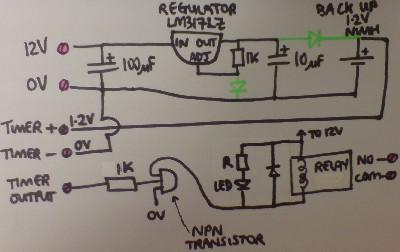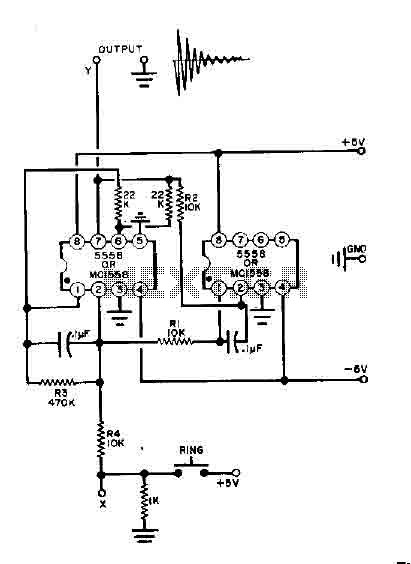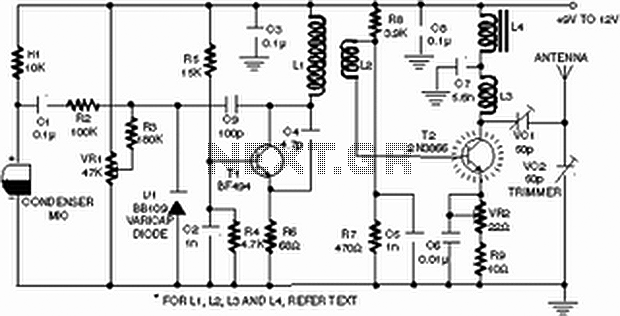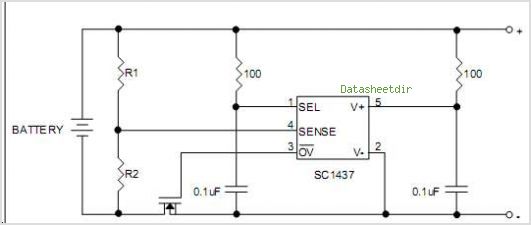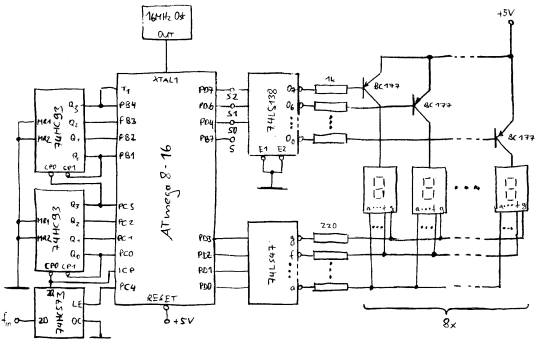
Long duration timer
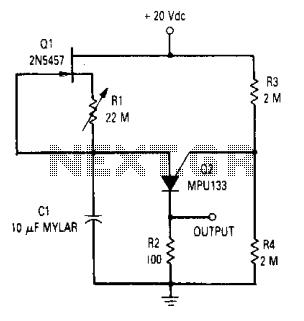
The time circuit can provide a time delay of up to 20 minutes. The circuit is a standard relaxation oscillator with a FET current source in which resistor R1 is used to provide reverse bias on the gate-to-source of the JFET. This turns the JFET off and increases the charging time of C1. C1 should be a low leakage capacitor such as a mylar type.
The described time circuit functions as a delay mechanism, capable of producing a time interval of up to 20 minutes. It operates as a relaxation oscillator, a common configuration in timing applications, utilizing a Field Effect Transistor (FET) as a current source. The circuit's design incorporates a resistor, designated as R1, which is crucial for establishing a reverse bias condition on the gate-to-source junction of the Junction FET (JFET). This reverse bias effectively turns the JFET off, thereby extending the charging time of the capacitor C1.
C1 is specified to be a low leakage capacitor, with mylar capacitors being recommended due to their favorable characteristics in timing circuits. Mylar capacitors are known for their stability and low leakage current, which is essential in maintaining the integrity of the timing interval. The combination of the FET, resistor R1, and capacitor C1 creates a time constant that governs the delay duration.
In the operation of the circuit, when power is applied, C1 begins to charge through the FET. The time taken for C1 to reach a specific voltage level, determined by the circuit's design, will dictate the delay before the output signal is activated. The relaxation oscillator mechanism contributes to the repetitive nature of the timing cycle, allowing for consistent and reliable operation. The values of R1 and C1 can be adjusted to fine-tune the time delay, providing flexibility in various applications where precise timing is required.The time circuit can provide a time delay of up to 20 minutes. The circuit is a standard relaxation oscillator with a FET current source in which resistor Rl is used to provide reverse bias on the gate-to-source of the JFET. This turns the JFET off and increases the charging time of Cl. Cl should be a low leakage capacitor such as a mylar type. 🔗 External reference
The described time circuit functions as a delay mechanism, capable of producing a time interval of up to 20 minutes. It operates as a relaxation oscillator, a common configuration in timing applications, utilizing a Field Effect Transistor (FET) as a current source. The circuit's design incorporates a resistor, designated as R1, which is crucial for establishing a reverse bias condition on the gate-to-source junction of the Junction FET (JFET). This reverse bias effectively turns the JFET off, thereby extending the charging time of the capacitor C1.
C1 is specified to be a low leakage capacitor, with mylar capacitors being recommended due to their favorable characteristics in timing circuits. Mylar capacitors are known for their stability and low leakage current, which is essential in maintaining the integrity of the timing interval. The combination of the FET, resistor R1, and capacitor C1 creates a time constant that governs the delay duration.
In the operation of the circuit, when power is applied, C1 begins to charge through the FET. The time taken for C1 to reach a specific voltage level, determined by the circuit's design, will dictate the delay before the output signal is activated. The relaxation oscillator mechanism contributes to the repetitive nature of the timing cycle, allowing for consistent and reliable operation. The values of R1 and C1 can be adjusted to fine-tune the time delay, providing flexibility in various applications where precise timing is required.The time circuit can provide a time delay of up to 20 minutes. The circuit is a standard relaxation oscillator with a FET current source in which resistor Rl is used to provide reverse bias on the gate-to-source of the JFET. This turns the JFET off and increases the charging time of Cl. Cl should be a low leakage capacitor such as a mylar type. 🔗 External reference
